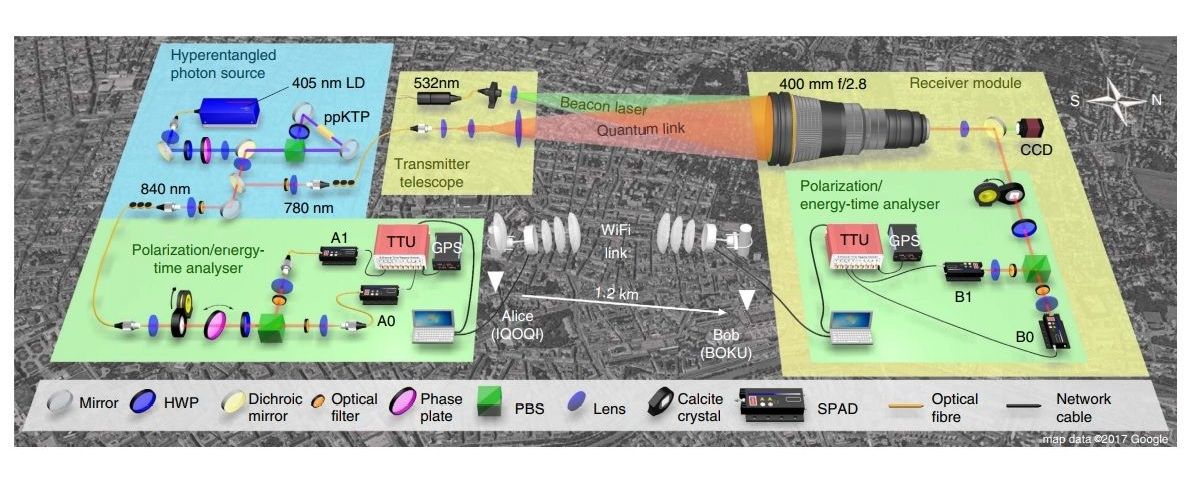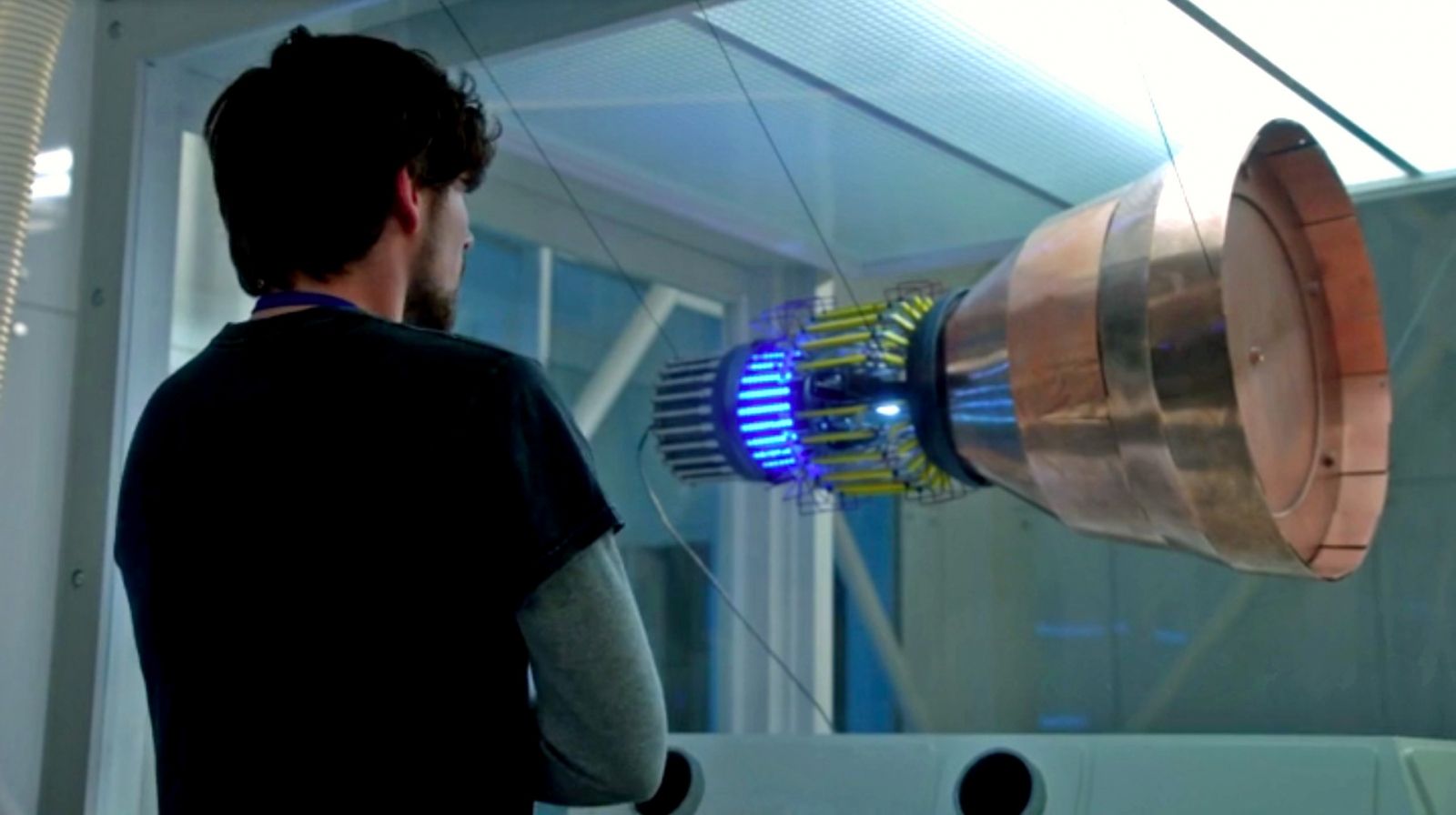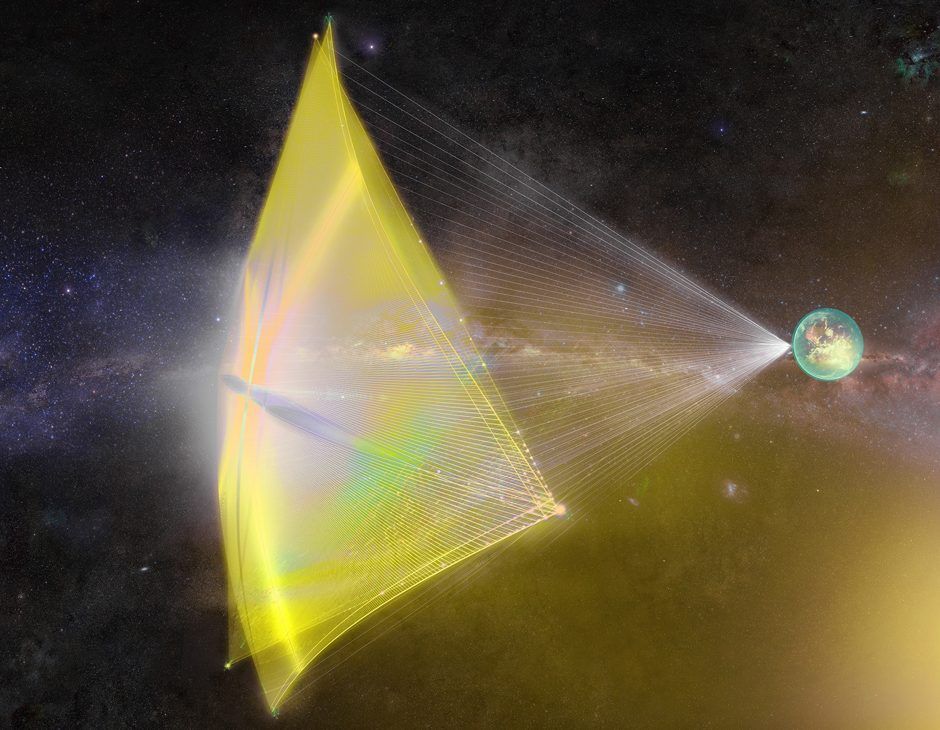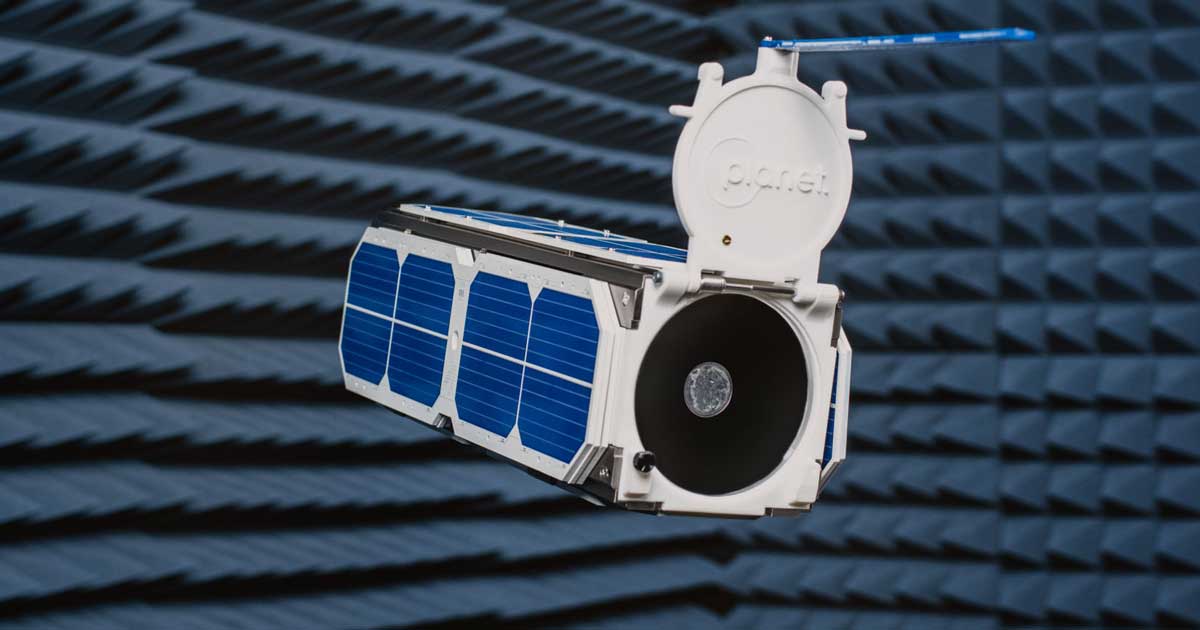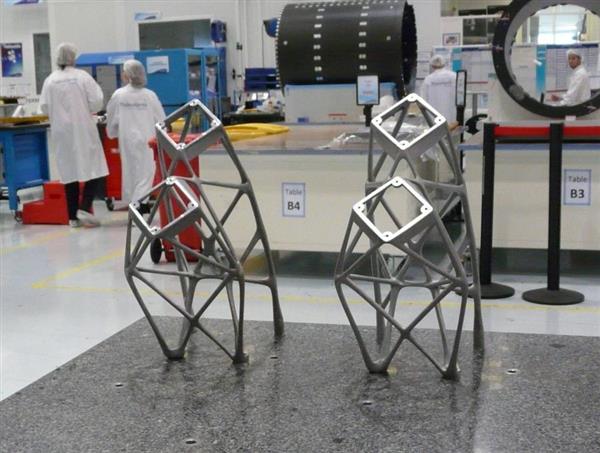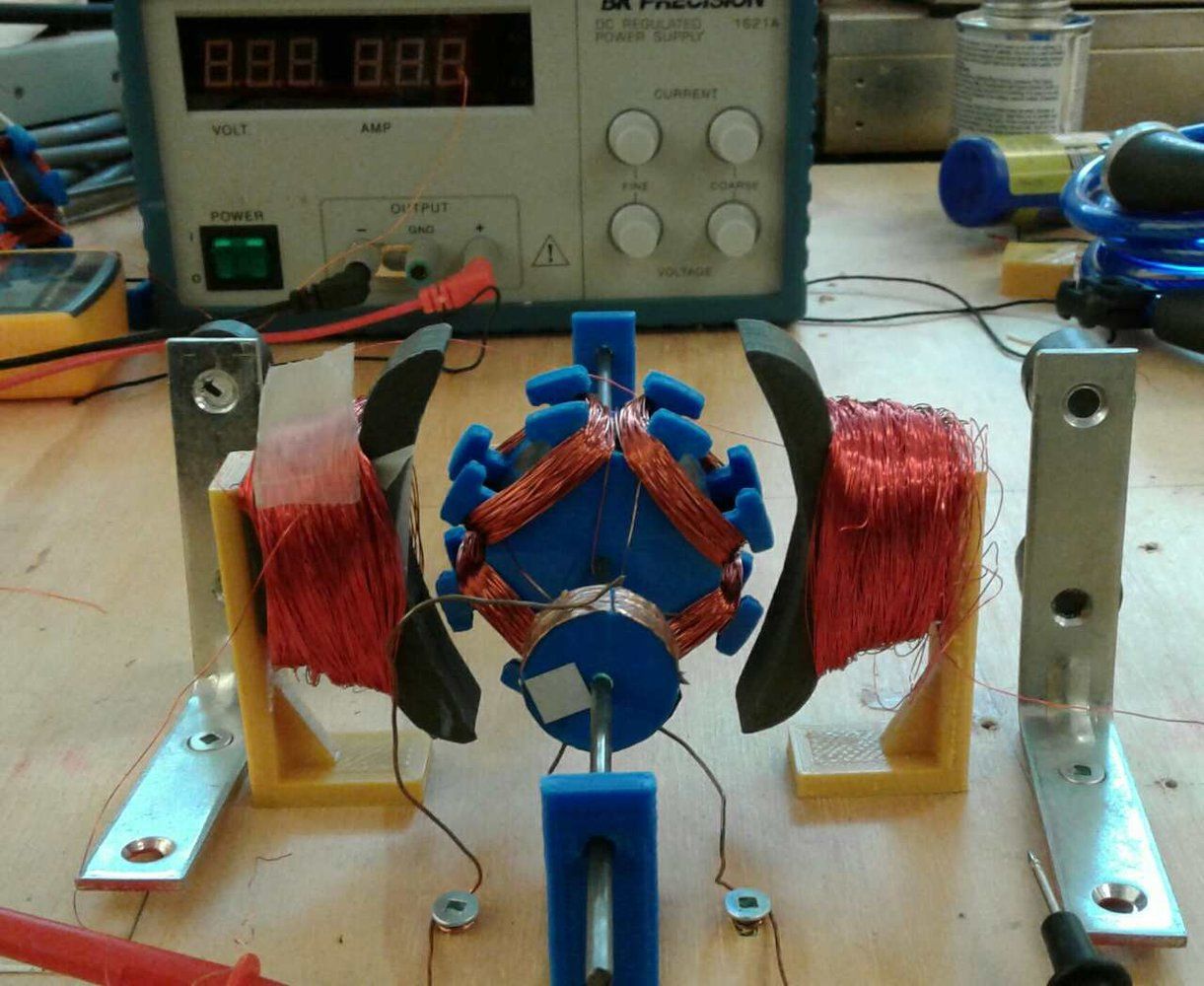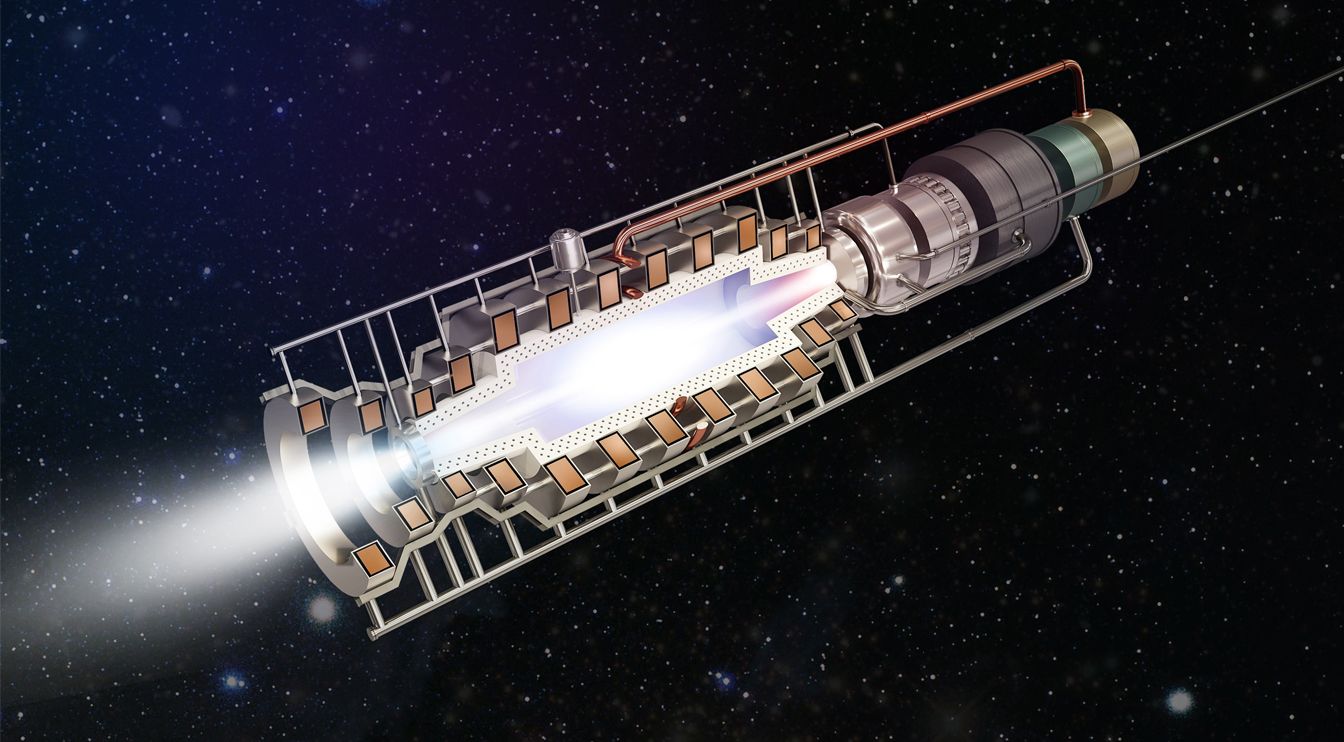(Phys.org)—For the first time, physicists have demonstrated that hyperentangled photons can be transmitted in free space, which they showed by sending many thousands of these photons between the rooftops of two buildings in Vienna. Hyperentanglement means that the photons are simultaneously entangled in at least two different properties—in this experiment, the researchers combined two two-dimensionally entangled properties to achieve four-dimensional hyperentanglement.
By showing that hyperentanglement transmission is feasible in the real world and not only in the lab, the physicists expect that the demonstration could one day be scaled up to establish a highly secure quantum Internet that uses satellites to quickly and securely transmit quantum information across the globe.
The physicists, led by Rupert Ursin at the Institute for Quantum Optics and Quantum Information (IQOQI) at the Austrian Academy of Sciences in Vienna, have published a paper on the distribution of hyperentanglement via atmospheric free-space links in a recent issue of Nature Communications.
